#indian burrowing frog
Note
Hello! Since March 8th is International Women’s Day, I was wondering if you might share with us some females from various species? (Since the more vibrant males tend to get the spotlight lol)
International Women’s Day!!!
Yes yes yes! With many animals, the females are more impressively large or more colorful than the males. Let's have a look at some impressive and amazing females...

(Southern) Green Anaconda (Eunectes murinus), female, family Boidae, Ecuador
With many snakes, the females get to be much larger than the males. Female Anacondas grow to be the heaviest snakes in the world, as up to 97.5 kg (214 lb 15 oz).
Though reports have claimed that Green Anacondas can grow up to over 30 ft long, the longest ever ACTUALLY measured was about 19 ft. long.
photograph by Alejandro Arteaga
Advance Wildlife Education

Brahminy Blindsnake aka Flowerpot Snake (Indotyphlops braminus), family Typhlopidae, found in tropical and subtropical areas around the world
This snake is native to somewhere along the Indian Ocean, possibly somewhere in SE Asia or coastal Africa.
The fossorial (burrowing) snake feeds mainly on the larvae, pupae, and eggs of ants and termites.
All known specimens of this snake have been female. They reproduce through parthenogenesis (asexually).
photograph via: UGA Coastal Ecology Lab
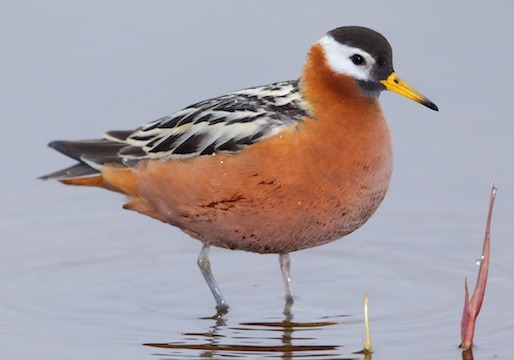
Red Phalarope (Phalaropus fulicarius), female, family Scolopacidae, order Charadriiformes, near Barrow, Alaska, USA
Female Phalaropes are larger and more colorful than the males. They court the males and defend the nest site. The males incubate the eggs, and raise the chicks.
photograph by Mark A. Chappell
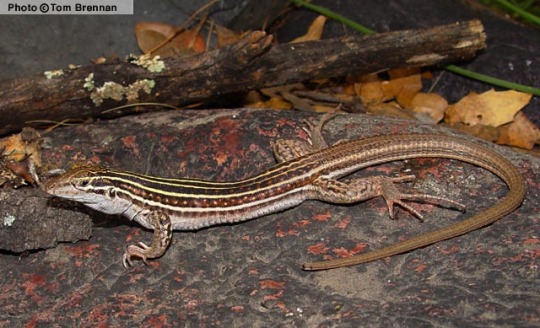
Sonoran Spotted Whiptail (Aspidoscelis sonorae), females, family Teiidae, Arizona
This is another all female parthenogentic species.
There are other closely relates species, other whiptails and racerunners, that are also all female populations. Some of them are completely parthenogenic, and some combine parthenogenesis with sexual input from closely related species or populations nearby.
photograph by Tom Brennan
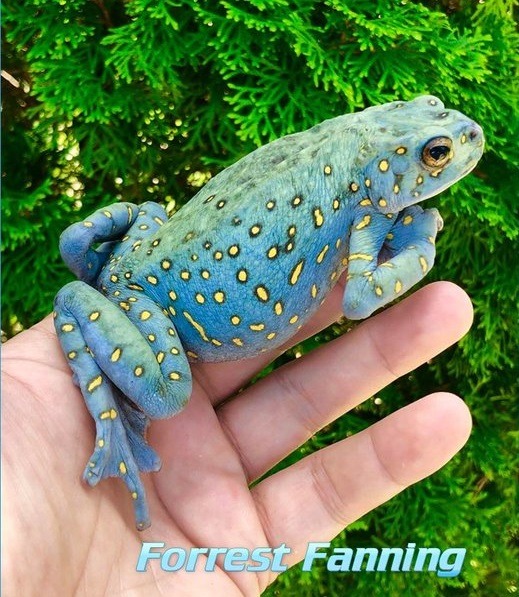
photograph by Forrest Fanning

photograph by Giuseppe Mazza
Asian Yellow-spotted Climbing Toad (Rentapia hosii), females, family Bufonidae, found in SE Asia
The females of this species are large, gorgeous, ornate frogs, while the males are much smaller and much less colorful.
#frog#toad#amphibian#snake#anaconda#reptile#phalarope#bird#animals#nature#whiptail#lizard#blind snake#international women's day
506 notes
·
View notes
Note
I've noticed that much of my confessions here are... well, a bit depressing, so I suppose I should talk about something more lighthearted.
In my canon, I believe I was autistic (there wasn't really a word for it in Outworld, but I'm almost certain I was), and one of my focused interests was frogs. Unfortunately, I can't remember a lot of the species found in Outworld, but thankfully there are plenty here in Earthrealm that are just as fascinating. Here's a few of my favorites:
The Purple Indian Frog. Of course, it's purple, which is obviously my favorite color, but it also looks very strange... Its large nose (which it uses to burrow into the ground) looks like a pig's, and it sounds like one too.
The Coqui. It reminds me of the frogs that would gather around the pond in the Hanging Gardens, and its sounds are quite endearing.
The Dyeing Poison Dart Frog. Poison Dart Frogs in general are a favorite of mine, but the colors on this one are the most beautiful, in my opinion.
The Desert Rain Frog. No, it's not just because it's called a "Rain" frog. Rain frogs are very unique as they do not start off as tadpoles, they crawl instead of hop, and they cannot swim. That, and I just find them adorable. They squeak like little toys!
The Purple Harlequin Toad. Yes, I know that this is not a frog, but I still find it very interesting. Unfortunately I can't find much information on it, and it seems to be critically endangered, but it is certainly a beautiful creature.
The Hairy Frog. This one is just bizzare, but I can't help but love it. Males have hair-like appendages on their hind legs called dermal papillae that help them absorb oxygen underwater, and they can also break their toes in order to create bone "claws" to defend themselves from predators. It reminds me a lot of Havik and his... unique abilities. I'm sure he would appreciate the comparison.
I know this has very little to do with fictionkin, but I just thought I would take a moment to be more positive. It's very nice to be able to discuss simpler things such as this.
-Rain (Mortal Kombat 1, #💜🌧)
x
#fictionkinfessions#fictionkin#💜🌧#rainkin#mortalkombat1kin#memories issue#body horror cw#??#mod party cat
9 notes
·
View notes
Text


Japanese Common Toad: Traditionally, these toads have had the venom from their glands used medicinally. In terms of behaviour, they hibernate underground over winter. When the temperature rises enough, in February/March, they undergo the migration to their breeding pools, using their sense of smell to find their way. They also eat an unpopular selection of insects including earthworms and carotid beetles, which are unsavoury due to the formic acid within them.
Indian Purple Frog: This species’ striking pointed nose is used to dig underground for their primary food source: termites, which they likely slurp up with their tongue. Not only eating there but also calling from under a layer of soil, they spend more time underground than most other burrowing frogs. They tend to only surface for mating during the rainy season. Tadpoles grow in quick-flowing streams, and have oral suckers to help them cling onto rocks. They are also used in traditional local medicine.
8 notes
·
View notes
Text
#1989 - Todiramphus sanctus - Sacred Kingfisher

Also known as the Kōtare in New Zealand, although that is a different subspecies to this one near the old mill on Culeenup Island. Three other subspecies are found elsewhere in the western Pacific. Originally described as Halcyon sanctus by Nicholas Aylward Vigors and Thomas Horsfield in 1827, based on John Latham's "Sacred King's Fisher" published in 1782. He wrote that this species and the related Collared Kingfisher were venerated on various Pacific islands, because they were frequently seen around sacred sites and burial grounds, and could control the waves. Halcyon was later split, with the new generic name is derived from the genus Todus, ('tody' being a West Indian insectivorous bird) and the Ancient Greek rhamphos “bill”.
Like the larger Kookaburra, Sacred Kingfishers do most of their hunting on land, waiting to swoop on reptiles, insects, frogs, small rodents and apparently also finches and other small birds. Occasionally they will take fish. Prey is carried back to the perch and beaten to death.
In Australia, it inhabits open eucalypt forests, melaleuca swamps, mangroves, mudflats, wetlands and river or lake margins, farmland, parks and gardens. On Culeenup it had most of the above (although none left of the actual Swamp Melaleuca thanks to salinity problems).
Sacred Kingfishers breed in river bank burrows in a river bank, tree hollows or termite mound throughout much of Australia (except the dry interior), New Zealand, New Caledonia and parts of New Guinea. Populations from southern Australia migrate overseas at the end of the breeding season to New Guinea, the eastern Solomon Islands and Indonesia. In New Zealand, T. sanctus vagans migrates from higher altitudes to the coast and also from forest to coast and open lands.
3 notes
·
View notes
Photo
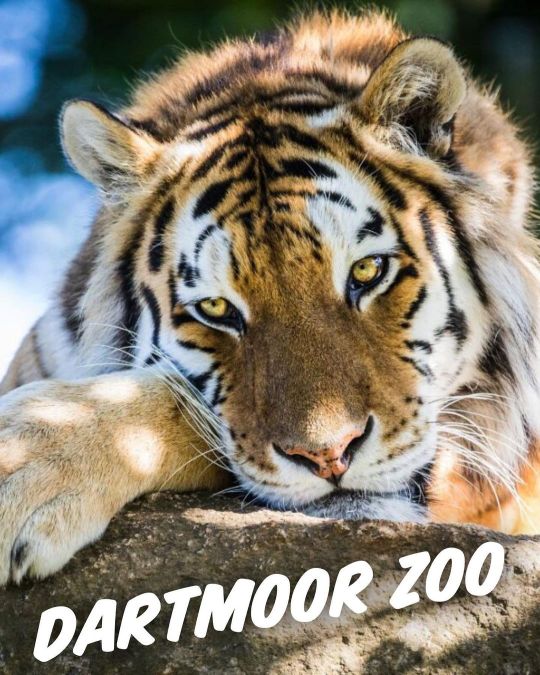
@dartmoorzoo has over 70 different animal species, including some endangered and critically endangered species. The zoo has a breeding programme with common marmosets, tapir, slender-tailed meerkats, Kafue lechwe, and wallaby. They also have Mammals Amur tiger, African lion, Jaguar, Carpathian lynx, Red-handed tamarin, Gelada, Iberian wolves, Asian short-clawed otters, Raccoon, Vervet monkeys, Common marmosets, Ring-tailed coati, Slender-tailed meerkats, tapir, capybara, Kafue lechwe, Grant's zebra, sugar gliders, lesser hedgehog tenrec, Parma wallabies, Bennett's wallabies, Reeves's muntjac, Fallow deer, domestic rabbits, raccoon dogs, reindeer, Azara's agouti, African pygmy goats and Cloud rat. Birds Ostrich, greater rhea, white-cheeked turaco, avocets, Indian runner ducks, Helmeted guinea fowl, white-naped crane, great horned owl, great grey owl, burrowing owl, European eagle owl, striated caracara, Himalayan Monal, and golden pheasant. Reptiles Red-tailed boa constrictor, royal python, corn snake, milk snake, Western hognose snake, blue spiky lizard, blue-tongued skink, bearded dragon, crested gecko, American alligators, electric blue gecko and yellow-headed day gecko. Amphibians African bullfrog, poison dart frog, golden Mantella frog, axolotl. Invertebrates Sun beetle, leaf insects, Mcklay's spectre, giant thorny stick insect, orange-headed cockroaches, Indian ornamental tarantula, Brazilian black tarantula, Chilean rose tarantula, tailless whip scorpion, and tiger land snails. https://www.dartmoorzoo.org.uk/ (at Dartmoor Zoological Park) https://www.instagram.com/p/Cp-9fbvrHJ0/?igshid=NGJjMDIxMWI=
0 notes
Text

today's funky frog of the day: the indian burrowing frog (Sphaerotheca breviceps) these large-eyed lads are found throughout most of south asia. they can live in places ranging from dry land to moist forest.
photo by L. Shyamal
379 notes
·
View notes
Photo
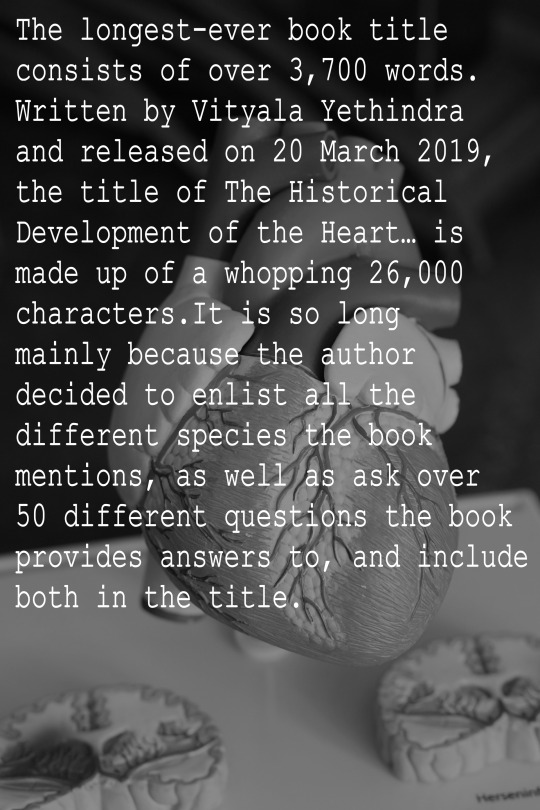
The full book title contains 3777 words and reads as follows: 'The historical development of the Heart i.e. from its formation from Annelida: Clam worm, Seamouse, Lugworm, Megascolex, Tubifex, Pheretima, Freshwater leech, marine leech, land leech. Arthropoda: Ladybird, Krill, Rock Barnacle, Root-headed Barnacle, Copepod, Silverfish, Cairns birdwing, Silver - spotted skipper, Scutigera, Cray fish, Large white, Andonis blue, Camberwell beauty, Tiger swallowtail, Regent skipper, Black – veined white, Green – underside blue, Blue Morpho, Apollo, Guava skipper, Cleopatra, Large copper, Millipede, Orb spider, Black widow spider, Giant crab spider, Wolf spider, Bird – eating spider, Tenebrionid beetle, Green Tiger beetle, African goliath beetle, Scolopendra, Diving beetle, African ground beetle, New guinea weevil, Barnacle, Lobster, Shrimp, Woodlice, Mite, Prawn, Housefly, Butterfly, Monarch butterfly, Peacock butterfly, Honey bee, Fairy shrimp, Horsehoe crab, Tick, Bluebootle, Froghopper, Yellow crazy ant, Water flea, Sea spider, Fiddler crab, Shiny spider crab, Hermit crab, Sail swallowtail, Red admiral, Morpho butterfly, Desert locust, Stephens island weta, Speckled bush cricket, Mole cricket, Dung – beetle, Euthalia ynipardus, Small blues, Termite, Hornet, Mosquito, Garden spider, Tarantula, Desert hairy scorpion, Emperor dragon – fly, Moth, Centipede, Wood ant, Stag beetle, Indian red admiral, Blue admiral, Harvestman, Hoverfly, Shield bug, Assassin bug, Cicada, Coreid bug, Rose aphid, Water – boatman, Wasp, June bug, Large tortoiseshell, Frog beetle, Mexican red – legged tarantula, Paintedlady, Sydney funnelweb spider, Small tortoiseshell, Mountain bumble bee, Trapdoor spider, Jumping spider, Daddy longlegs spider, Orchind bee, Asian carpenter bee, Parasitic bee, House spider, Giant longhorn beetle, Flea, Bedbug Beetle, Cockroach, Scorpion, Spider, Ant, Gnats, Grasshopper, Silver fish, Crab, Great green bush cricket, Elephant hawk – moth. Mollusca: Neomenia, Chaetoderma, Chiton, Lepidopleurus, Apple snail, Sea hare, Sea lemon, Dentalium, Freshwater mussel, Marine mussel, Pearl oyster, Cuttlefish, Giant squid, Chambered fish, Devilfish. Fishes or Pisces: African glass catfish, African lungfish, Aholehole, Airbreathing catfish, Alaska blackfish, Albacore, Alewife, Alfonsino, Algae eater, Alligatorfish, Alligator gar, Amberjack - Seriola dumerili, American sole, Amur pike, Anchovy, Anemonefish, Angelfish, Angler, Angler catfish, Anglerfish, Antarctic cod, Antarctic icefish, Antenna codlet, Arapaima, Archerfish, Arctic char, Armored gurnard, Armored searobin, Armorhead, Armorhead catfish, Armoured catfish, Arowana, Arrowtooth eel, Asian carps, Asiatic glassfish, Atka mackerel, Atlantic Bonito (Sarda sarda), Atlantic cod, Atlantic herring, Atlantic salmon, Atlantic Sharpnose Shark - Rhizoprioltodon terraenovae, Atlantic saury, Atlantic silverside, Australasian salmon, Australian grayling, Australian herring, Australian lungfish, Australian prowfish, Ayu, Baikal oilfish, Bala shark, Ballan wrasse, Bamboo shark, Banded killifish, Bandfish, Banjo, Bangus, Banjo catfish, Bank Sea Bass, Barb, Barbel, Barbeled dragonfish, Barbeled houndshark, Barbel-less catfish, Barfish, Barracuda, Barracudina, Barramundi, Barred danio, Barreleye, Basking shark, Bass, Basslet, Batfish, Bat ray, Beachsalmon, Beaked salmon, Beaked sandfish, Beardfish, Beluga sturgeon, Bengal danio, Betta, Bichir, Bicolor goat fish, Bigeye, , Bighead carp, Bigmouth buffalo, Bigscale, Billfish, Bitterling, Black angelfish, Black bass, Black dragonfish, Blackchin, Blackfin Tuna - Thunnus atlanticus, Blackfish, Black neon tetra, Blacktip reef shark, Black mackerel, Black scalyfin, Black sea bass, Black scabbardfish, Black swallower, Black tetra, Black triggerfish, Bank Sea Bass aka Yellow Sea Bass - Centropristis ocyurus, Bleak, Blenny, Blind goby, Blind shark, Blobfish, Blueline Tilefish, Blowfish, Blue catfish, Blue danio, Blue-redstripe danio, Blueline Tilefish , Blue eye, Bluefin tuna, Bluefish, Bluegill, Blue gourami, Blue shark, Blue triggerfish, Blue whiting, Bluntnose knifefish, Bluntnose minnow, Boafish, Boarfish, Bobtail snipe eel, Bocaccio, Boga, Bombay duck, Bonefish, Bonito, Bonnetmouth, Bonytail chub, Bronze corydoras, Bonytongue, Bowfin, Boxfish, Bramble shark, Bream, Brill, Bristlemouth, Bristlenose catfish, Broadband dogfish, Brook lamprey, Brook trout, Brotula, Brown trout, Buffalo fish, Bullhead, Bullhead shark, Bull shark, Bull trout, Burbot, Bumblebee goby, Buri, Burma danio, Burrowing goby, Butterfish, Butterfly ray, Butterflyfish, California flyingfish, California halibut, Canary rockfish, Candiru, Candlefish, Capelin, Cardinalfish, Cardinal tetra, Carp, Carpetshark, Carpsucker, Catalufa, Catfish, Catla, Cat shark, Cavefish, Celebes rainbowfish, Central mudminnow, Chain pickerel, Channel bass, Channel catfish, Char, Cherry salmon, Chimaera, Chinook salmon, Cherubfish, Chub, Chubsucker, Chum salmon, Cichlid, Cisco, Climbing catfish, Climbing gourami, Climbing perch, Clingfish, Clownfish, Clown loach, Clown triggerfish, Cobbler, Cobia, Cod, Codlet, Codling, Coelacanth, Coffinfish, Coho salmon, Coley, Collared carpetshark, Collared dogfish, Colorado squawfish, Combfish, Combtail gourami, Common carp, Common tunny, Conger eel, Convict blenny, Convict cichlid, Cookie-cutter shark, Coolie loach, Cornetfish, Cowfish, Cownose ray, Cow shark, Crappie, Creek chub, Crestfish, Crevice kelpfish, Croaker, Crocodile icefish, Crocodile shark, Crucian carp, Cuckoo wrasse, Cusk, Cusk-eel, Cutlassfish, Cutthroat eel, Cutthroat trout, Dab, Dace, Desert pupfish, Devario, Devil ray, Dhufish, Discus, Diver: New Zealand sand diver or long-finned sand diver, Dogfish, Dogfish shark, Dogteeth tetra, Dojo loach, Dolly Varden trout, Dolphin fish - Corypaena hippurus, Dorab, Dorado, Dory, Dottyback, Dragonet, Dragonfish, Dragon goby, Driftfish, Driftwood catfish, Drum, Duckbill, Duckbill eel, Dusky grouper, Dusky Shark - Carcharhinus obscurus, Dwarf gourami, Dwarf loach, Eagle ray, Earthworm eel, Eel, Eel cod, Eel-goby, Eelpout, Eeltail catfish, Elasmobranch, Electric catfish, Electric eel, Electric knifefish, Electric ray, Elephant fish, Elephantnose fish, Elver, Ember parrotfish, Emerald catfish, Emperor angelfish, Emperor bream, Escolar, Eucla cod, Eulachon, European chub, European eel, European flounder, European minnow, European perch, False brotula, False cat shark, False moray, Fangtooth, Fathead sculpin, Featherback, Fierasfer, Fire goby, Filefish, Finback cat shark, Fingerfish, Firefish, Flabby whale fish, Flagblenny, Flagfin, Flagfish, Flagtail, Flashlight fish, Flatfish, Flathead, Flathead catfish, Flier, Flounder, Flying gurnard, Flying fish, Footballfish, Forehead brooder, Four-eyed fish, French angelfish, Freshwater eel, Freshwater hatchetfish, Freshwater shark, Frigate mackerel, Frilled shark, Frogfish, Frogmouth catfish, Fusilier fish, Galjoen fis, Ganges shark, Geel, Garibaldi, Garpike, Ghost fish, Ghost flathead, Ghost knifefish, Ghost pipefish, Ghost shark, Ghoul, Giant danio, Giant gourami, Giant sea bass, Gibberfish, Gila trout, Gizzard shad, Glass catfish, Glassfish, Glass knifefish, Glowlight danio, Goatfish, Goblin shark, Goby, Golden dojo, Golden loach, Golden shiner, Golden trout, Goldeye, Goldfish, Gombessa, Goosefish, Gopher rockfish, Gourami, Grass carp, Graveldiver, Grayling, Gray mullet, Gray reef shark, Great white shark, Green swordtail, Greeneye, Greenling, Grenadier, Green spotted puffer, Ground shark, Grouper, Grunion, Grunt, Grunter, Grunt sculpin, Gudgeon, Guitarfish, Gulf menhaden, Gulper eel, Gulper, Gunnel, Guppy, Gurnard, Haddock, Hagfish, Hairtail, Hake, Halfbeak, Halfmoon, Halibut, Halosaur, Hamlet, Hammerhead shark, Hammerjaw, Handfish, Hardhead catfish, Harelip sucker, Hatchetfish, Hawkfish, Herring, Herring smelt, Hickory Shad, Horn shark, Horsefish, Houndshark, Huchen, Humuhumunukunukuapua'a, Hussar, Icefish, Ide, Ilisha, Inanga, Inconnu, Jack, Jackfish, Jack Dempsey, Japanese eel, Javelin, Jawfish, Jellynose fish, Jewelfish, Jewel tetra, Jewfish, John Dory, Kafue pike, Kahawai, Kaluga, Kanyu, Kelp perch, Kelpfish, Killifish, King of the herrings, Kingfish, King-of-the-salmon, Kissing gourami, Knifefish, Knifejaw, Koi, Kokanee, Kokopu, Kuhli loach, Labyrinth fish, Ladyfish, Lake chub, Lake trout, Lake whitefish, Lampfish, Lamprey, Lanternfish, Largemouth bass, Leaffish, Lefteye flounder, Lemon shark, Lemon sole, Lemon tetra, Lenok, Leopard danio, Lightfish, Limia, Lined sole, Ling, Ling cod, Lionfish, Livebearer, Lizardfish, Loach, Loach catfish, Loach goby, Loach minnow, Longfin, Longfin dragonfish, Longfin escolar, Longfin smelt, Long-finned char, Long-finned pike, Longjaw mudsucker, Longneck eel, Longnose chimaera, Longnose dace, Longnose lancetfish, Longnose sucker, Longnose whiptail catfish, Long-whiskered catfish, Loosejaw, Lost River sucker, Louvar, Loweye catfish, Luderick, Luminous hake, Lumpsucker, Lungfish, Mackerel, Mackerel shark, Madtom, Mahi-mahi, Mahseer, Mail-cheeked fish, Mako shark, Mandarinfish, Masu salmon, Medaka, Medusafish, Megamouth shark, Menhaden, Merluccid hake, Mexican golden trout, Midshipman fish, Milkfish,, Minnow, Minnow of the deep, Modoc sucker, Mojarra, Mola, Monkeyface prickleback, Monkfish, Mooneye, Moonfish, Moorish idol, Mora, Moray eel, Morid cod, Morwong, Moses sole, Mosquitofish, Mouthbrooder, Mozambique tilapia, Mrigal, Mud catfish (Mud cat), Mudfish, Mudminnow, Mud minnow, Mudskipper, Mudsucker, Mullet, Mummichog, Murray cod, Muskellunge, Mustache triggerfish, Mustard eel, Naked-back knifefish, Nase, Needlefish, Neon tetra, New World rivuline, New Zealand smelt, Nibble fish, Noodlefish, North American darter, North American freshwater catfish, North Pacific daggertooth, Northern anchovy, Northern clingfish, Northern lampfish, Northern pike, Northern sea robin, Northern squawfish, Northern stargazer, Notothen, Nurseryfish, Nurse shark, Oarfish, Ocean perch, Ocean sunfish, Oceanic whitetip shark, Oilfish, Oldwife, Old World knifefish, Olive flounder, Opah, Opaleye, Orange roughy, Orangespine unicorn fish, Orangestriped triggerfish, Orbicular batfish, Orbicular velvetfish, Oregon chub, Orfe, Oriental loach, Oscar, Owens pupfish, Pacific albacore, Pacific cod, Pacific hake, Pacific herring, Pacific lamprey, Pacific salmo, Pacific saury, Pacific trout, Pacific viperfish, Paddlefish, Pancake batfish, Panga, Paradise fish, Parasitic catfish, Parore, Parrotfish, Peacock flounder, Peamouth, Pearleye, Pearlfish, Pearl danio, Pearl perch, Pelagic cod, Pelican eel, Pelican gulper, Pencil catfish, Pencilfish, Pencilsmelt, Peppered corydoras, Perch, Peters' elephantnose fish, Pickerel, Pigfish, Pike conger, Pike eel, Pike, Pikeblenny, Pikeperch, Pilchard, Pilot fish, Pineapplefish, Pineconefish, Pink salmon, Píntano, Pipefish, Piranha, Pirarucu, Pirate perch, Plaice, Platy, Platyfish, Pleco, Plownose chimaera, Poacher, Pollock, Pomfret, Pompano dolphinfish, Ponyfish, Popeye catalufa, Porbeagle shark, Porcupinefish, Porgy, Port Jackson shark, Powen, Prickleback, Pricklefish, Prickly shark, Prowfish, Pufferfish, Pumpkinseed, Pupfish, Pygmy sunfish, Queen danio, Queen parrotfish, Queen triggerfish, Quillback, Quillfish, Rabbitfish, Raccoon butterfly fish, Ragfish, Rainbow trout, Rainbowfish, Rasbora, Ratfish, Rattail, Ray, Razorback sucker, Razorfish, Red Grouper, Red salmon, Red snapper, Redfin perch, Redfish, Redhorse sucker, Redlip blenny, Redmouth whalefish, Redtooth triggerfish, Red velvetfish, Red whalefish, Reedfish, Reef triggerfish, Remora, Requiem shark, Ribbon eel, Ribbon sawtail fish, Ribbonfish, Rice eel, Ricefish, Ridgehead, Riffle dace, Righteye flounder, Rio Grande perch, River loach, River shark, River stingray, Rivuline, Roach, Roanoke bass, Rock bass, Rock beauty, Rock cod, Rocket danio, Rockfish, Rockling, Rockweed gunnel, Rohu, Ronquil, Roosterfish, Ropefish, Rough scad, Rough sculpin, Roughy, Roundhead, Round herring, Round stingray, Round whitefish, Rudd, Rudderfish, Ruffe, Russian sturgeon, Sábalo, Sabertooth, Saber-toothed blenny, Sabertooth fish, Sablefish, Sacramento blackfish, Sacramento splittail, Sailfin silverside, Sailfish, Salamanderfish, Salmon, Salmon shark, Sandbar shark, Sandburrower, Sand dab, Sand diver, Sand eel, Sandfish, Sand goby, Sand knifefish, Sand lance, Sandperch, Sandroller, Sand stargazer, Sand tiger, Sand tilefish, Sandbar Shark - Carchathinus plumbeus, Sarcastic fringehead, Sardine, Sargassum fish, Sauger, Saury, Sawfishm, Saw shark, Sawtooth eel, Scabbard fish, Scaly dragonfish, Scat, Scissortail rasbora, Scorpionfish, Sculpin, Scup, Sea bass, Sea bream, Sea catfish, Sea chub, Sea devil, Sea dragon, Sea lamprey, Sea raven, Sea snail, Sea toad, Seahorse, Seamoth, Searobin, Sevan trout, Sergeant major, Shad, Shark, Sharksucker, Sharpnose puffer, Sheatfish, Sheepshead, Sheepshead minnow, Shiner, Shortnose chimaera, Shortnose sucker, Shovelnose sturgeon, Shrimpfish, Siamese fighting fish, Sillago, Silver carp, Silver dollar, Silver dory, Silver hake, Silverside, Silvertip tetra, Sind danio, Sixgill ray, Sixgill shark, Skate, Skilfish, Skipjack tuna, Slender mola, Slender snipe eel, Sleeper, Sleeper shark, Slickhead, Slimehead, Slimy mackerel, Slimy sculpin, Slipmouth, Smalleye squaretail, Smalltooth sawfish, Smelt, Smelt-whiting, Smooth dogfish, Snailfish, Snake eel, Snakehead, Snake mackerel, Snapper, Snipe eel, Snipefish, Snoek, Snook, Snubnose eel, Snubnose parasitic eel, Sockeye salmon, Soldierfish, Sole, South American darter, South American lungfish, Southern Dolly Varden, Southern flounder, Southern hake, Southern sandfish, Southern smelt, Spadefish, Spaghetti eel, Spanish mackerel, Spearfish, Speckled trout, Spiderfish, Spikefish, Spinefoot, Spiny basslet, Spiny dogfish, Spiny dwarf catfish, Spiny eel, Spinyfin, Splitfin, Spookfish, Spotted climbing perch, Spotted danio, Spottail Pinfish - Diplodus holbrooki, Sprat, Springfish, Squarehead catfish, Squaretail, Squawfish, Squeaker, Squirrelfish, Staghorn sculpin, Stargazer, Starry flounder, Steelhead, Stickleback, Stingfish, Stingray, Stonecat, Stonefish, Stoneroller minnow, Stream catfish, Striped bass, Striped burrfish, Sturgeon, Sucker, Suckermouth armored catfish, Summer flounder, Sundaland noodlefish,Sunfish, Surf sardine, Surfperch, Surgeonfish, Swallower, Swamp-eel, Swampfish, Sweeper, Swordfish, Swordtail, Tadpole cod, Tadpole fish, Tailor, Taimen, Tang, Tapetail, Tarpon, Tarwhine, Telescopefish, Temperate bass, Temperate perch, Tenpounder, Tenuis, Tetra, Thorny catfish, Thornfish, Threadfin, Threadfin bream, Thread-tail, Three spot gourami, Threespine stickleback, Three-toothed puffer, Thresher shark, Tidewater goby, Tiger barb, Tigerperch, Tiger shark, Tiger shovelnose catfish, Tilapia, Tilefish, Titan triggerfish, Toadfish, Tommy ruff, Tompot blenny, Tonguefish, Tope, Topminnow, Torpedo, Torrent catfish, Torrent fish, Trahira, Treefish, Trevally, Triggerfish, Triplefin blenny, Triplespine, Tripletail, Tripod fish, Trout, Trout cod, Trout-perch, Trumpeter, Trumpetfish, Trunkfish, Tubeblenny, Tube-eye, Tube-snout, Tubeshoulder, Tui chub, Tuna, Turbot, Two spotted goby, Uaru, Unicorn fish, Upside-down catfish, Vanjaram, Velvet belly lanternshark, Velvet catfish, Velvetfish, Vermillion Snapper - Rhomboplites aurorubens, Vimba, Viperfish, Wahoo, Walking catfish, Wallago, Walleye, Walleye Pollock, Walu, Warmouth, Warty angler, Waryfish, Waspfish, Weasel shark, Weatherfish, Weever, Weeverfish, Wels catfish, Whale catfish, Whalefish, Whale shark, Whiff, Whitebait, White croaker, Whitefish, White marlin, White shark, Whitetip reef shark, Whiting, Wobbegong, Wolf-eel, Wolffish, Wolf-herring, Worm eel, Wormfish, Wrasse, Wrymouth, X-ray fish, Yellowback fusilier, Yellowbanded perch, Yellow bass, Yellowedge grouper (Hyporthodus flavolimbatus), Yellow-edged moray, Yellow-eye mullet, Yellowhead jawfish, Yellowfin croaker, Yellowfin cutthroat trout, Yellowfin grouper, Yellowfin Tuna - Thunnus albacares, Yellowfin pike, Yellowfin surgeonfish, Yellowfin tuna, Yellowmargin triggerfish, Yellow moray, Yellow perch, Yellowtail, Yellowtail amberjack, Yellowtail barracuda, Yellowtail clownfish, Yellowtail horse mackerel, Yellowtail kingfish, Yellowtail snapper, Yellow tang, Yellow weaver, Yellowtail catfish, Zander, Zebra bullhead shark, Zebra danio, Zebrafish, Zebra lionfish, Zebra loach, Zebra oto, Zebra pleco, Zebra shark, Zebra tilapia, Zebra turkeyfish, Ziege, Zingel. Amphibians: Frogs and Toads, Painted frogs, Disc tongued frogs, Fire Belly toads, Litter frogs, European Spadefoot toads, Parsley frogs, Tongueless frogs, Clawed frogs, Mexican Burrowing Toad, American spadefoot toads, Screeching frogs, True toads, Glass Frogs, Poison dart frogs, Ghost frogs, Shovelnose frogs, Tree frogs, Sedge frogs, Southern frogs, Narrow-mouthed frogs, Australian ground frogs, True frogs, Moss frogs, Seychelles frog, Giant Salamanders, Asiatic Salamanders, Mole Salamanders, Pacific giant salamanders, Amphiumas, Lungless salamanders, Mudpuppies and Waterdogs, Torrent salamanders, True salamanders and Newts, Sirens, Common caecilians, Fish caecilians, Beaked caecilians. Reptiles: Turtles, common snapping turtles and alligator snapping turtle, pond turtles and box turtles, tortoises, Asian river turtles and allies, pignose turtles, softshell turtles, river turtles, mud turtles, sea turtles, leatherback turtles, tuataras, scaled reptiles, agamas, chameleons, casquehead lizard, iguanas, Madagascar iguanids, collared and leopard lizards, horned lizards, anoles, wood lizards, Neotropical ground lizards, geckos, legless lizards, blind lizards, spinytail Lizards, plated lizards, spectacled lizards, whiptails and tegus, Lacertids, skinks, night lizards, glass lizards, American legless lizards, knob-scaled lizards, gila monsters, earless Monitor lizards, monitor lizards, worm Lizards, shorthead Worm Lizards, two-legged Worm Lizards, snakes, wart snakes, false coral snakes, dwarf pipe snakes, African burrowing asps, stiletto snakes, boas, anacondas, Old World sand boas, Mauritius snakes, Colubrids, typical snakes, Asian pipe snakes, cobras, coral snakes, mambas, sea snakes, Mexican pythons, pythons, dwarf boas, pipe snakes, shield-tailed snakes, vipers, pitvipers, Fae's viper, night adders, pitvipers, rattlesnakes, true vipers, sunbeam snakes, blind snakes, primitive blind snakes, slender blind snakes, thread snakes, blind snakes, typical blind snakes, Crocodiles, alligators, garials. Aves: Ostrich, rheas, cassowaries and emu, kiwis, elephant birds, upland moas, great moas, lesser moas, Tinamous, Australian brush turkey,megapodes, chachalacas, curassows, and guans, Guineafowl, pheasants and allies, New World quail, pheasants and relatives, mihirungs, screamers, magpie-goose, ducks, geese, and swans, grebes, swimming flamingos, flamingos, pigeons and doves, sandgrouse, mesites, Tawny frogmouth, Nightjars, oilbird, potoos, frogmouths, owlet-nightjars, treeswifts, swifts, hummingbird, cuckoos and relatives, turacos and relatives, bustards, hoatzin, cranes and allies, cranes, limpkin, trumpeters, rails and allies, adzebills, finfoots, flufftails, rails and relatives, thick-knees and allies, thick-knees and relatives, sheathbills, Magellanic plover, plover-like waders, golden plovers, ibisbill, oystercatchers, plovers and lapwings, jacana-like waders, painted snipes, Egyptian plover, jacanas, seedsnipes, plains-wanderer, sandpipers and relatives, buttonquail, gulls and allies, coursers and pratincoles, crab-plover, skuas and jaegers, auks and puffins, gulls, skimmers and terns, sunbittern, tropicbirds, penguins, albatrosses, austral storm petrels, northern storm petrels, petrels and relatives, White stork, storks, frigatebirds, boobies and gannets, darters, cormorants and shags, ibises and spoonbills, hamerkop, shoebill, pelicans, herons and relatives, New World vultures, secretarybird, osprey, hawks, eagles, buzzards, harriers, kites and Old World vultures, barn owls, true owls, mousebirds, cuckooroller, trogons and quetzals, hornbills, hoopoe, woodhoopoes, bee-eater, rollers, ground rollers, todies, motmots, Kingfisher, jacamars, puffbirds, African barbets, Asian barbets, toucans, toucan barbets, American barbets, woodpeckers, honeyguides, seriemas, falcons and relatives, kakapo, kea and kakas, cockatoos, African and American parrots, Australasian parrots, Pesquet's parrot, vasa parrots, Pitta cyanea, Lyrebird, New Zealand wrens, suboscines, Old World suboscines, sapayoa, Calyptomenid broadbills, pittas, broadbills, asities, New World suboscines, bronchophones, manakins, cotingas, sharpbills, royal flycatchers and allies, becards and tityras, spadebills, many-colored rush tyrants, mionectine flycatchers, tyrant flycatchers, tracheophones, crescent-chests, gnateaters, antbirds, antpittas, ground antbirds, ovenbirds, oscines, scrub-birds, lyrebirds, bowerbirds, Australasian treecreepers, Australasian wrens, bristlebirds, gerygones and allies, honeyeaters and relatives, Australasian babblers, logrunners, quail-thrushes and jewel-babblers, cuckoo-shrikes, whitehead and allies, sittellas, wattled ploughbills, whipbirds and quail-thrushes, Australo-Papuan bellbirds, crested shriketits, painted berrypeckers, vireos and relatives, whistlers and relatives, Old World orioles, Boatbills, woodswallows and butcherbirds, mottled berryhunter, ioras, bristlehead, bushshrikes and relatives, wattle-eyes and batises, vangas , fantails, silktail, drongo fantail, drongos, blue-capped ifrits, Australian mudnesters, birds-of-paradise, monarch flycatchers, shrikes, jays and crows, berrypeckers, satinbirds, Australasian robins, stitchbird, wattlebirds, rockfowl, rock-jumpers, rail-babbler, fairy warblers, hyliotas, penduline tits, chickadees and true tits, Nicators, bearded reedling, larks, African warblers, cisticolas and relatives, marsh warblers, pygmy wren-babblers, grass warblers, Malagasy warblers, swallows and martins, bulbuls, leaf warblers, bush warblers , Bushtits, true warblers, parrotbills, fulvettas, white-eyes, babblers and relatives, fulvettas, ground babblers, laughing thrushes, kinglets, spotted wren-babblers, Hawaiian honeyeaters, silky-flycatchers, waxwings, Palmchat, hypocolius, wallcreeper, nuthatches, treecreepers, wrens, gnatcatchers, dippers, thrushes and relatives, flycatchers and relatives, oxpeckers, mockingbirds and thrashers, starlings and mynas , sugarbirds, dapplethroat and allies, flowerpeckers, sunbirds, fairy-bluebirds, leafbirds, olive warbler, accentors, pink-tailed bunting, weavers and relatives, whydahs and indigobirds, weaver finches, Old World sparrows, wagtails and pipits, finches and relatives, longspurs, snow buntings, rosy thrush-tanagers, Old World buntings and New World sparrows, American sparrows, palm-tanager and allies, New World blackbirds and New World orioles, Cuban warblers, wood warblers, cardinals, grosbeaks, and New World buntings, tanagers and relatives. MAMMALS: Rat, Bat, Horse, Standardbred, Throughbred, Saddlebred, Arab, Palomino, Australian stock, Appaloosa, Barb, Lippizaner, Mustang, American Shetland, Falabella, Percheron, Shire, Mule, Bullock, Setter, Oxen, Camel, Tiger, Lion, Hyaenas, Leopard, Bear, Cat, Dog, Sheep, Goat, Cow, Cob, Pig, Chamois, Bulldog, Borzoi, Loris, Longspur, Harvest mouse, Spiny – ant eater, Duck – billed platypus, Elephant, Rhinoceros, Tonkinese, Ragdoll, Margay, Tapir, Seal, Sea lion, Walrus, Dolphin, Bactrian camel, Arabian camel, Bushbaby, Burmese cat, Whale, Porpoise, Aardvark, Ape, Monkey, Gorilla, Chimpanzee, Flying Lemur, Hare, Pika, Macaque, Rabbit, Colobus, Antelope, Caribou, Cattle, Deer, Grizzly bear, Hyrax, Armadillo, Porcupine, Hedgehog, Arctic hare, Mole, Shrew, Beaver, Asian black bear, Polar bear, Sloth bear, Spectacled bear, Mouse, Squirrel, Dugong, Moose, Fallow deer, Reindeer, Red deer, Manatee, Egyptian Mau, Scottish fold, Himalayan, Birman, Red squirrel, Hippopotamus, Weasel, Whale, Wither, Blue whale, Sperm whale, Killer whale, Wallaby, Beluga, Baird’s beaked whale, Grey whale, Bryde’s whale, Pygmy right whale, Southern right whale, Seal, Ape, Indri, Aye – aye, Alaskan Malamute, Dobermann, Beagle, Kinkajou, Afgan Hound, Rough Collie, Cardigan Welsh Corgi, Sheepdog, Pointer, Poddle, Weimaraner, Bloodhound, Zebra, Giraffe, Yak, Arctic fox, Polecat, Golden Retriever, Kerry Blue, Prairie dog, Airedale, German spitz, Pekingese, Otter, Shih Tzu, Proboscis monkey, Orang – utan, Red Howler monkey, Spider monkey, Sloth, Koala, Pangolin, Mustelid, Mongoose, Guinea pig, Malayan Porcupine, Naked Mole rat, Capybara, Pallid Gerbil, Brown rat, Somali, Ocicat, Balinese, Bengal, Cymric, Chartreux, Devon Rex, Turkish Angora, Russian Blue, Yellow – necked woodmouse, Hamster, Grey squirrel, Chipmunk, Fox, Blue Longhair, Chinese Pangolin, Blue – cream shorthair, Tortoiseshell and white shorthair, Brown spotted shorthair, Red and white Japanese bobtail, Javanese, Red Persian Longhair, Brown classic tabby maine coon, Lilac angora, Seal point Siamese, Brown and white sphinx, Red classic tabby manx, Vampire bat, Proboscis bat, Franquet’s fruit bat, Bengal Tiger, Horseshoe bat, Noctule bat, Funnel - eared bat, Blue exotic, Foreign lilac oriental shorthair, Boxer, Bay, Cream point colour pointed british shorthair, Abyssinian, Cinnamon silver Cornish rex, Wolverine, Skunk, Human being, Pine marten, Stoat, Chocolate point longhair, Husky, Ant eater, Kangaroo, Gray Mouse Lemur, Musk oxen, Raccoon dogrie, Pasnda, Bouto, Pembroke Welsh corgi, Whippet, Whisker, Indus river dolphin, Franciscana, Sorrel, Finless porpoise, Jerboa, Harbour porpoise, Bottlenose dolphin, Border Collie, Diana Monkey, White – beaked dolphin, Atlantic white – sided dolphin, Bobcat, Alpaca, Aberdeen angus, Lynx, Pacific white – sided dolphin, Rhesus monkey, Irish wolfhound, Baboon, Slivery marmoset, Puma, Ocelot, Norwegian Forest Cat, Basenji, Keeshond, Akita, Samoyed, Briard, Brittaney, Vizsla, Weimaraner, Saluki, Greyhound, Rottweiler, Bullmastiff, Newfoundland, Puli, Bombay, Sphynx, Kangaroo rat, Humpback whale, Red panda, Maltese, Pug, Chihuahua, Papillon, Pomeranian, Schipperke, Aardwolve, Cheetah, Civet, Red – Bellied Lemur, Moustache, Monkey, Yorkshire terrier, German shepherd, Clumber spaniel, Bouvier des Flandres, Belgian sheepdog, Boston terrier, Italian greyhound, Chesapeake Bay retriever, Genet, Musk deer, Bichon fries, Rock Hyrax, Pony, Mink, Mammoth, Mastodon, Giant sloth, Llama, African Elephant, DeBrazza’s Monkey, Siberian Tiger, Hackney Pony, Bonnet Monkey, German wirehaired pointer, Ferret, Jaguar, Dalmatian, Red Bengal Tiger, Badger, Shunk, Skye terrier, Great dane, Grampus, Bandicoot, Wolf, Marmot, Squirrel monkey, Sable, Minke whale, Spectacle porpoise, Opossums, Airedale, Wombat. etc , Ramapithecus, Australopithecus bosei or Paranthropus bosei, Zinjanthopus bosei, Homo – erectus ( Java man, Peking man, Heidelberg man ), Homo – Sapiens ( Neanderthal man, Cro – Magnon man) to the modern humans with their development and structure of their Heart, their contributions to the formation of the modern humans. What is the origin of the heart? In which place the heart is situated? What is the weight of our (modern humans) heart? Can a person live without a heart? What is the function of the heart? How heart pumps blood to the body? What type of circulation takes place in the human heart? How big our human heart is? Why is our (modern humans) heart considered as the most developed in the world? Why does heart stop? What are heart sounds? What are the types of heart sounds? What causes the heart sounds heard with a stethoscope? What is the anatomy of the heart? Why heart is considered an important organ in the body? Why can’t people live if heartbeat stops? Where is heart located in? How many chambers are present in the heart? What is the number of heart beats per minute? What is the amount of blood pumped by heart? How much blood does the human heart pump in a lifetime? And Short notes on heart attack i.e. what is the definition of a heart attack? Why does a heart attack occur? What are the types of the heart attack? What happens if human get a heart attack? What are the symptoms of Heart attack? What are the causes of the Heart attack? What are the risk factors related to the Heart attack? What are the types of risk factors cause the Heart attack? What are the complications of a Heart attack? What types of diagnosis useful in detecting and treating a heart attack? What treatment is needed to treat heart attack patients? What are 5 strategies to be maintained after the heart attack? What to do after recovery from a heart attack? What is cardiac rehabilitation? Why cardiac rehabilitation is needed to heart attack patients? Does cardiac rehabilitation create positive effects? What are a lifestyle and home remedies are to be maintained? What type of coping and support should be given to heart attack patients? What are the immediate measures should be taken when you encounter an emergency of heart attack patient? What signs and symptoms list should be made to consult a doctor? What is a widow maker heart attack? What is the definition of a widowmaker heart attack? What are the symptoms of Widowmaker heart attack? What are the causes of Widowmaker heart attack? What are the risk factors related to Widowmaker heart attack? What are the complications of a widowmaker heart attack? What types of diagnosis useful in detecting and treating a widowmaker heart attack? What treatment is needed to treat heart attack patients? How to make over your lifestyle? What type of measures should be taken to stay away from a heart attack? What are 20 types of foods should be taken to keep your heart healthy? Solutions and answers of above questions, material and topics are included and cleared in this book.'
25 notes
·
View notes
Photo
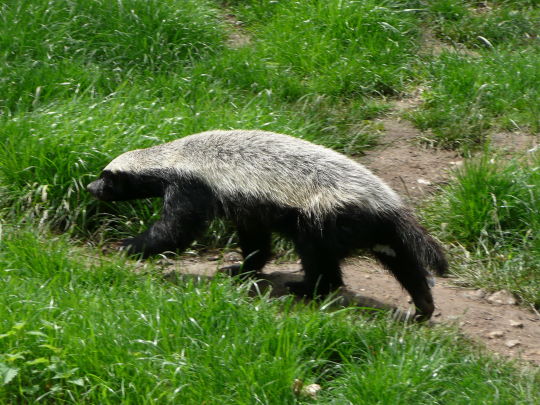

Honey badger (Mellivora capensis)
The honey badger is a mammal widely distributed in Africa, Southwest Asia, and the Indian subcontinent. Despite its name, the honey badger does not closely resemble other badger species; instead, it bears more anatomical similarities to weasels. It is primarily a carnivorous species and has few natural predators because of its thick skin, strength and ferocious defensive abilities. It is listed as the "world's most fearless animal" in the 2002 edition of the Guinness Book of World Records. As of 2005, 12 subspecies are recognised as valid taxa. The honey badger is mostly solitary, but has also been sighted in Africa to hunt in pairs during the breeding season in May. It also uses old burrows of aardvark, warthog and termite mounds. It is a skilled digger, able to dig tunnels into hard ground in 10 minutes. These burrows usually have only one entry, are usually only 1–3 m long with a nesting chamber that is not lined with any bedding. The honey badger is notorious for its strength, ferocity and toughness. It is known to savagely and fearlessly attack almost any other species when escape is impossible, reportedly even repelling much larger predators such as lion and hyena. Bee stings, porcupine quills, and animal bites rarely penetrate their skin. The honey badger has the least specialised diet of the weasel family next to the wolverine. It accesses a large part of its food by digging it out of burrows. It favours honey and often searches for beehives. It is also feeds on insects, frogs, tortoises, turtles, lizards, rodents, snakes, birds and eggs. It also eats berries, roots and bulbs.
photo credits: CT Cooper, Derek Keats
#Honey badger#Mellivora capensis#mammal#zoology#biology#biodiversity#science#wildlife#nature#animals#cool critters
895 notes
·
View notes
Text
Women, Children, and Frogs
It happened that a man whose name was Guahayona told another who was called Yahubaba to go and gather a plant called digo, with which they clean their bodies when they go to bathe.
He went out before dawn, and the Sun caught him along the road, and he was turned into a bird that sings in the morning, like the nightingale, and is called yahubabayael. Seeing that the man whom he had sent to gather the digo did not return, Guahayona resolved to leave the Cacibajagua cave.
And he said to the women: “Leave your husbands and let us go to other lands and let us take much güeyo. Leave your children, and let us take only the plant with us, for afterwards we will return for them.”
Guahayona departed with all the women and went in search of other lands, and he arrived in Matininó, where he immediately left the women and went to another region, called Guanín; and they had left the small children next to a stream. Later, they say, when hunger began to trouble them, they wept and called to their mothers who had gone away; and the parents could not succor the children, who were crying out from hunger to their mothers, saying “mama” in order to cry, but truly in order to ask for the teat. And crying thus and asking for the teat, saying “toa, toa” like one who asks for something with great desire and very softly, they were transformed into little animals, like frogs, which are called tona, because of the way they were asking for the teat.
And in this way all those men [of the Cacibajagua cave] were left without women.
They say that one day the men went to bathe, and while they were in the water, it rained a great deal, and they felt a great desire to have women; and that often when it rained, they went to search for the tracks of their women, but they could not find any sign of them. But that day, as they were bathing, they say that they saw some kind of persons fall from some trees, coming down among the branches. These forms were neither men nor women, nor did they have the sex of male or female, and they went to seize them, but they fled as if they were eels. Therefore, by order of their cacique, because they could not seize them, they called two or three men to see how many there were and to seek out for each one a man who was caracaracol because their hands were rough, and thus they might hold on to them tightly. They told the cacique there were four of them, and so they took four men who were caracaracoles. The said caracaracol is a disease like mange that makes the body very rough. After they had seized them, they took counsel on what they could do to make them women because they did not have the sex of male or female.
They looked for a bird called Inriri, formerly called Inriri Cahubabayael, which makes holes in the trees and in our language is called a woodpecker. And likewise they took those women without the sex of male or female, and they tied their hands and feet, and they brought the aforementioned bird and tied it to their bodies. And believing they were trees, the bird began his customary work, picking and burrowing holes in the place where the sex of women is generally located. And in this way the [Taíno] say that they had women, according to the stories of the most elderly.
Pané, Fray Ramon. An Account of the Antiquities of the Indians (Chronicles of the New World Encounter) (Kindle Locations 385-389). Duke University Press. Kindle Edition.
4 notes
·
View notes
Text
Birthday, part 4: Sara & Conor
[Part 1, Part 2, and Part 3]
[Malcolm @cursebreakerelmswood , Paisley @paisleymills , Clara @lins-hogwarts-mystery , Arjun @hogwarts9 , Selene @no-moon-nor-stars , and Samantha @samshogwarts ]
SARA
Someone tapped her shoulder and Sara spun around to see Malcolm Elmswood. She smiled.
“Hey, Mal,” she said.
“Happy birthday, Sara!” Malcolm said.
“Oh thank you. Thanks for the party as well.”
“It was no problem. Anyways, I wanted to give you this.”
He handed her a small package. Sara took it gently from him, and unwrapped it. It was a small stained glass trinity knot.
“Oh, wow. Malcolm, you didn’t have to get me anything!” Sara exclaimed, before hugging the boy tightly.
“I wanted to. You don’t care for quidditch all that much so I saw that and thought of you. You have the trinity knot on a lot of your jewelry,” he explained.
“Well, thank you very much Malcolm.”
“You’re welcome.”
“Uh, Malcolm, could I borrow Sara for a few minutes?” Barnaby asked, tapping Malcolm softly on the shoulder.
“Sure.”
Barnaby smiled softly at her and Sara felt her stomach flip. He looked good in that green plaid shirt. He held a small package and it wasn’t until they were on the other side of the Burrow, away from all the people that he took her.
“Happy birthday, Sara,” Barnaby said.
“Thank you,” Sara said.
“I wanted to give you this.” He handed her a small neatly wrapped package.
“Barnaby, you didn’t have to.” Sara gently took the package from him.
“I wanted to.”
“You already gave me your sweater.”
“I wanted to get you something else as well.”
“Oh, Barn.” Sara glanced around, and after making sure that no one else was around or watching, grabbed the lapels of his shirt. Standing on her tiptoes, she gently pressed her lips to his.
They broke apart quickly, and Sara gently unwrapped the small package. Inside it was a blue and green braided leather bracelet and a small ceramic panda. Sara smiled widely at him.
“I love it. Thank you so much. You still shouldn’t have, though,” Sara whispered.
“You’re welcome and I wanted to. You deserve it,” Barnaby whispered back.
The two smiled at one another and then walked back to the party. They split a few moments later, with Barnaby going to talk to Conor, and Sara standing by the food table for a few moments.
“Happy birthday, Sara.” Sara turned to see Paisley Mills standing next to her.
“Thank you, Paisley,” she said.
“I’m sorry if this sounds a little odd and out of place, but did you know that Barnaby Lee and I are engaged? I’m only mentioning it because I saw you two walk off together.”
Sara froze. Her eyes darted back to Barnaby, who was talking animatedly with her brother (who just looked overwhelmed), and then to Paisley again.
“Really?” she whispered.
“Yeah. It’s no big deal, though. Because I’m not interested in him,” Paisley said.
“How long?”
“Since as long as I can remember. It’s null, though. I’m not marrying him and he’s not marrying me.”
“I just thought that arranged marriages were a thing of the past. Well, at least here.”
“They’re not when it’s you’ve got a horrible pure blood family whose only goal is to extend their power and status.”
Sara sighed. Life wasn’t fair. If it was fair, then Mum and Dad would be standing here with us and Cian wouldn’t have been such a jackass and Uncle Doyle wouldn’t be around, Sara thought. Paisley smiled sympathetically at her. The two fell into an amicable silence for a long period of time.
“Happy birthday!” Clara Lin exclaimed.
“Thanks, Clara,” Sara said smiling at her.
“Are you excited for frog choir this year?”
“Yeah. I hope we do a lot more at Christmas. I still think we should add muggle Christmas carols to our list.”
“That would be so cool.”
The two girls continued to discuss music for a long time after that. They touched on the music playing from the speakers, with Sara pointing out which tracks were her siblings’ choices. They exchanged which songs they hoped to sing in frog choir in the coming school year.
CONOR
Conor pushed his glasses back up his nose. The heat in his cheeks was still there. He ran a hand through his hair. Jeez, he felt awkward. After all, Conor hated being the center of attention. Okay, it was fine on the quidditch field or with a small group of people (ten or less), but this was a little much for the reserved Ravenclaw. His mind was whirling a mile a minute, thinking of every possible conversation he could have, and okay, this was normal. He always played possible conversations in his head, mainly to figure out what possible sounds he would need.
“Happy birthday!” Conor turned around to see Selene Clair de Lune.
“Th-th-thank you,” he said, his cheeks darkening again as they heated.
“No problem. Hey, do you know who sings this?”
“This is ‘L-love Ain’t for Keeping’ by The Who.”
“Really? Are they a muggle band?”
Conor nodded. “Album’s f-f-from 1971.”
“Wow. That’s rather old.”
“Y-yeah. It’s my… preferred one.”
“Ah. Have you seen Artemis, by the way?”
“Uh. I th-think he’s over th-there.” Conor pointed to a white haired teen with long hair.
“Thanks. Happy birthday again.”
Conor’s cheeks heated and he sighed, shoving his hands into the pockets of his jeans.
“Hey, happy birthday!” a voice said, making Conor spin around, and pull his hands out of his pocket.
He inhaled sharply, and counted backwards from five. “Thanks, … Arjun,” he said, offering the Indian prince a small smile.
“You’re welcome. What is the purpose of that t-shirt you are wearing?”
“Oh. It’s the F-F-F-Finn Harps. A f-football team.”
“Ah. That’s a muggle sport, correct?”
Conor nodded. “I don’t know how big it is in muggle India, but here it’s p-pretty big.”
“Okay. Do you care much for muggle sports? I could show you some sword tricks.”
“I like… r-r-r-rugby as well. But some ssssword tricks some time might be cool.”
The two boys established a small timeline for when Arjun Singh could show Conor some of his sword tricks. The Irish boy swallowed as he listened to the other boy excitedly explain a few different tricks that he knew.
“Happy birthday, Conor!” an Irish voice exclaimed and Conor turned to see Samantha O’Connell.
“Thanks,” he said, silently cheering himself as he didn’t stutter on the word ‘thanks’ again.
“Did I hear that you’re taking a bunch of muggle courses at a muggle school?”
“Yeah. Th-th-that’s r-r-r… correct.”
“Are you taking any physics courses?”
“One. It’s needed f-for architecture.”
“Cool. I really like physics. Do you like it?”
“So far.”
The two continued to discuss Conor’s muggle classes for a while.
#sorry if your mc is out of character#hphm#hogwarts mystery#sara o'donnell#conor o'donnell#malcolm elmswood#paisley mills#clara lin#selene clair de lune#samantha o'connell#arjun singh#barnaby lee#sara x barnaby#saraby: forever mine#FINISHED!!#last part#did not proofread or anything#so there may be mistakes#oh well#it's done#and kinda short#but it's done
14 notes
·
View notes
Text

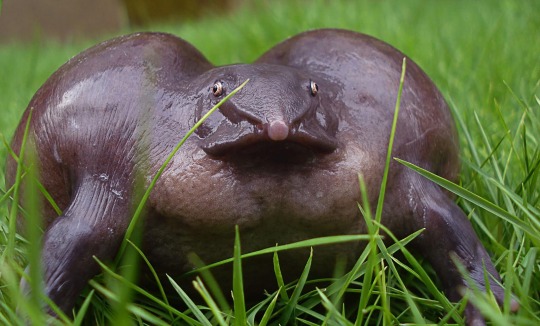
Indian Purple Frog (Nasikabatrachus sahyadrensis)
also known as the pignose frog or simply the purple frog, these fellows live in the western ghats in india and were only recently formally described in 2003. they have been evolving independently for 100 million years, which is why they appear so different! they’re a burrowing species, and only come up once a year to breed. they’re currently listed as endangered due to being overeaten by locals :[
#animal#facts#animal facts#anima#nature#naturecore#indian purple frog#purple frog#pignose frog#frog#toad#amphibian
6 notes
·
View notes
Video
youtube
Step aside! This Indian balloon frog [Uperodon globulosus] has places to be, and no time to waste! These frogs can be found from southern Nepal and inland India, emerging from their burrows to breed during the monsoon season. Their fat bodies are partially the result of their enormous lungs, contrasted by their small heads.
169 notes
·
View notes
Text
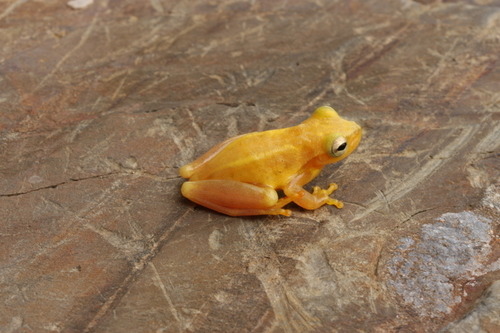
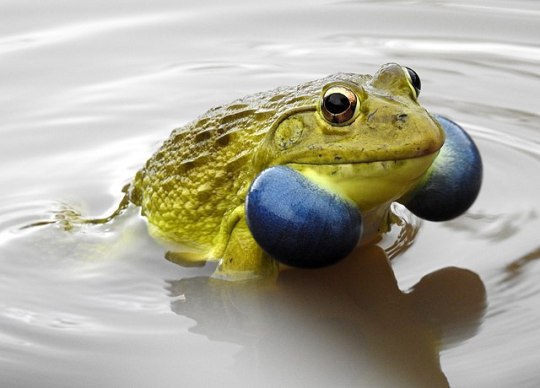
Dwarf Mexican Tree Frog: Found throughout Mexico and down to Costa Rica, this frog is the largest of its genus. They have the ability to change colour but tend to retain their dark patches. They are very dependent on pools of water, and in dry years can be difficult to find. To survive, they wrap themselves in a cocoon of “parchment-like” material. In pools, females lay up to 3500 eggs in a film on the surface of the water. When attacked, they let out high-pitched distress calls.
Indian Bullfrog: This frog’s striking appearance isn’t universal: females and non-breeding males are olive or grey with a white stomach and lack the bright blue and yellow colouration that breeding males use to attract mates during monsoons. There, they congregate in water, fighting over females that come within reach. They spend most of their time on land, however, eating everything from earthworms to small birds and rodents. The tadpoles are also carnivorous, with reports of them eating animal carcasses and cannibalism. In winter and during drought, they hibernate by burrowing underground.
1 note
·
View note
Text
Civets as well a Genets are very fascinating, adorable creatures. Genets actually make good pets. These animals are feline-like in appearance, either carnivorous or omnivorous, but are not related to actual felines. They are nocturnal and rest in tress, rock crevices, and empty burrows. Civets and Genets are usually solitary.
“The vocal African palm civet spends most of it’s time the forest canopy, where it feeds chiefly on the fruits of trees and vines and occasionally on small animals and birds. All other species of pine civets are confined to the forests of Asia. They are skillful climbers, aided by their sharp, curved, retractable claws, usually naked soles, and partly fused third and fourth toe, which strengthen the grasp of the hindfeet” (Mcdonald pg. 124).
The fossa is a species of Civet that is found only in Madagascar. They have long tails which help with climbing as well as keeping their balance when hunting in the treetops. They look a lot like a big cat. They take up the niches that lions, tigers, or other feline apex predators would because there are no feline species native to the island. They are much closer related to mongooses than actual felines. Even so, they have retractable claws, akin to those of a feline. They can potentially grow up to six feet long and weigh 26 pounds.
Sulawesis or Great or Brown palm civets have webbed, flexible feet. In Southeast Asian forests, there are five species of banded palm civets and otter civets. Banded palm civets eat lizards, frogs, rats, crabs, snails, earthworms, and ants. Owson’s banded civet mainly eats invertebrates. Hose’s palm resembles the banded palm civet in body but has a differing head shape. Otter civets have shorter rounded ears, a thinner pointier muzzle, a more compact body, and a shorter tail. African civets live in all habitats on the continent. Indian civets are smaller than Indian civets and eat small mammals and birds, stalking prey like a cat. They also scavenge and eat eggs.
Binturongs or bearcats have been reported to swim in rivers and catch fish. They resemble a combination of bears and cats but are not ursine or feline. Their long, fluffy tails sometimes serve as a fifth hand. They can potentially live up to 20 years. They are found in forests throughout Southeast Asia. Unfortunately, they are a vulnerable species due to habitat destruction.
Binturongs are thought to be the most closely related to palm civets. They are generally solitary and nocturnal, like most civets. They are generally shy animals, and hard to spot, especially due to their endangered status. The habitat loss has been worse in the southern range of territory. They rely on thick, dense forests for shelter and safety.
#Civets#Mammal Encylopedia#Genets#David Macdonald#African Pine Civet#Madagascar#Fossa#Southeast Asia#Binturong#Bearcat#Sulawesi#Great Palm Civet#Brown Palm Civet#Banded palm civet#Owson's banded civet#Hose's palm civet#Otter civets#African civets#Indian Civets
3 notes
·
View notes
Photo

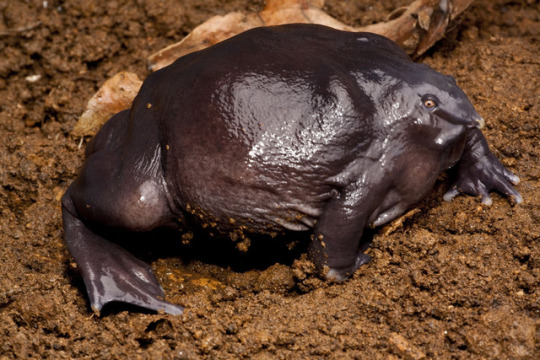
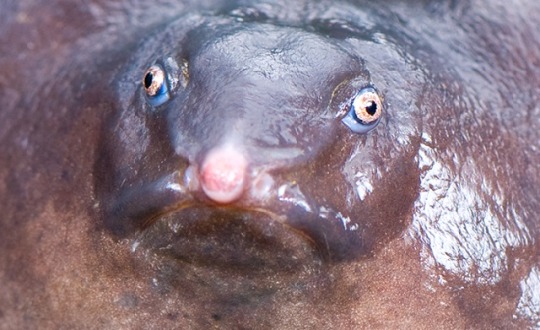
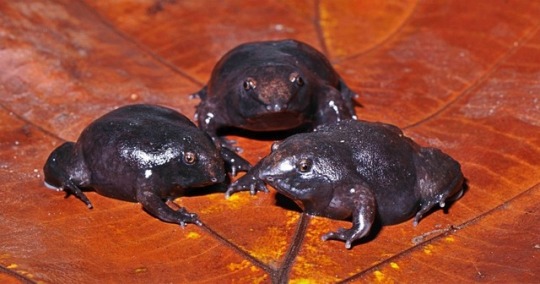
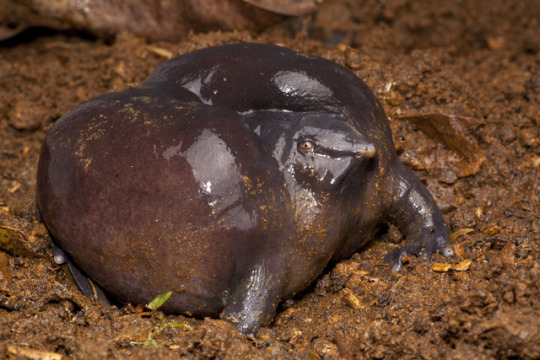

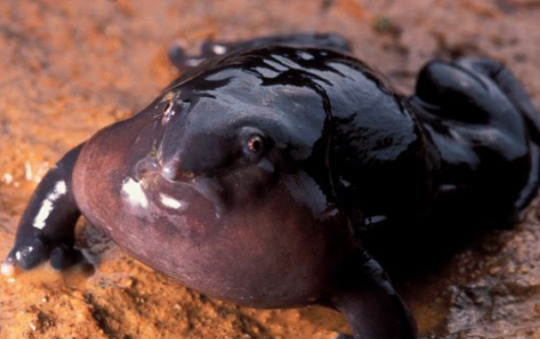
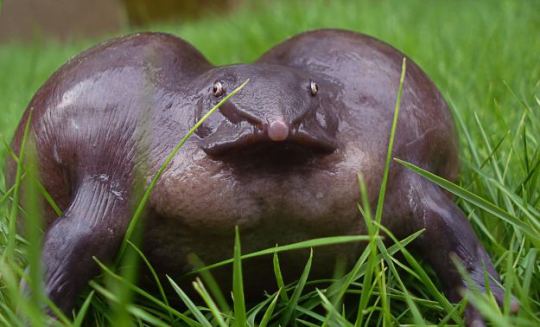

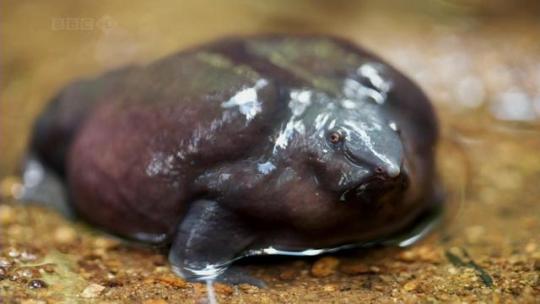
Purple Frog
With a chubby, purple body and pointed, piglike snout, it’s unlike any other frog on Earth. Some of the purple frog’s unusual looks are adaptations for its burrowing lifestyle: The animal spends most of the year underground, using its short, stout limbs like spades to dig as far as 12 feet below ground. Only formally discovered in 2003, the colorful amphibian is an endangered species native to the mountains of India’s Western Ghats. Names in English that have been used for this species are purple frog, Indian purple frog, or pignose frog.
The frog spends most of its life underground and surfaces only during the monsoon, for mating. Unlike many other burrowing species of frogs that emerge and feed above the ground, this species has been found to forage underground, feeding mainly on termites using its tongue and a special buccal groove.
When the frogs emerge for a brief period during the monsoon season to mate, the males call out to attract females. They call from underground, beneath a thin layer of dirt near the entrance of narrow tunnels filled with loose soil, according to the first detailed description of the purple frog’s advertisement call.
With few field scientists out in the field during the rainy season the species was discovered and studied only in recent times. Although the adult frog was formally described in October 2003, the taxon was recognized much earlier by its tadpole, which had been described in 1918. With its closest relatives in the Seychelles, Nasikabatrachus is thought to have evolved separately for millions of years. Its discovery also adds to the evidence that Madagascar and the Seychelles separated from the Indian landmass sometime well after the breakup of Gondwana had started.
http://voices.nationalgeographic.com/2014/02/19/animals-science-purple-frogs-india-calls/
5K notes
·
View notes
Text

today’s funky frog of the day is: sphaerotheca rolandae! commonly known as the indian burrowing frog, they are endemic to south asia, specifically bangladesh, pakistan, nepal, india, sri lanka, and myanmar. they are around 2.5 inches, and they are light brown or olive in color with darker spots on their upper sides. they have two vocal sacs and vomerine teeth. they inhabit both dry, arid land and most deciduous forest. they are usually found in leaf litter, under rocks, or in crevices. their lifespan is unknown.
467 notes
·
View notes